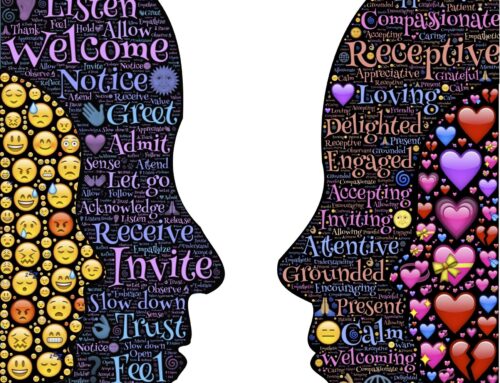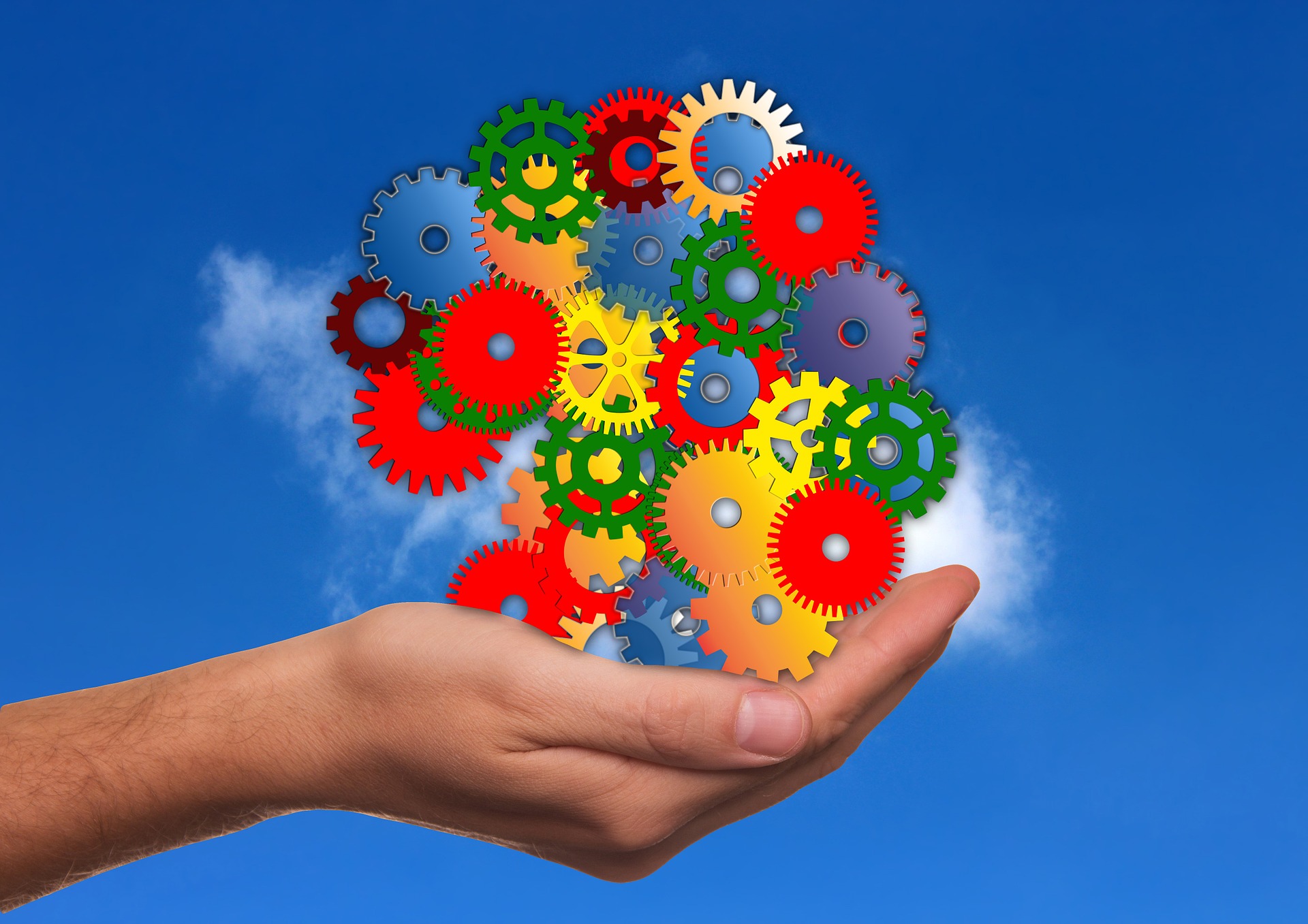
Hello, my name is Gertrude Gill. I am a psychosynthesis psychotherapist and organisational leadership coach. In this series:
- I will be inviting you to look closely at how you are doing in terms of self-empowerment and where you would like to be.
- By the end of the course you will have a deeper knowledge of yourself in terms of your relationship with your own power, your will, your choices, your responsibility to your own wellbeing.
- You will have identified the key self-belief mindsets that keeps you stuck
- You will have accelerated your self-efficacy (the belief that you can achieve)
- You will have taken the next step on your journey of transformation
- You will have the tools you need to embrace that deeper stirrings in you for fulfilment
What do we mean when we use the term self-empowerment?
“Our deepest fear is not that we are inadequate. Our deepest fear is that we are powerful beyond measure. It is our light, not our darkness that most frightens us. We ask ourselves, Who am I to be brilliant, gorgeous, talented, fabulous? Actually, who are you not to be? You are a child of God. Your playing small does not serve the world. There is nothing enlightened about shrinking so that other people won’t feel insecure around you. We are all meant to shine, as children do.” (Marianne Williamson, “A Return To Love: Reflections on the Principles of A Course in Miracles”)
Personal empowerment is about taking control of your own life, making decisions based on what is life-giving for you and taking responsibility for that journey. This journey of self-empowerment is one that shines a light out for others.
‘There is no point in making yourself small so that others will
To help explore self-empowerment in more depth, I am looking through various psychological lenses.
- Psychosynthesis psychology and the inclusion of the transpersonal / psychospiritual
- Self-Determination theory and Psychological needs (autonomy, competence, and relatedness) (Deci & Ryan, 2008)
- Adlerian psychology and the formation of our mindsets by the culture and belief system we were brought up in
- Neuroscience and the neurobiology of wellbeing (Stress management and resilience practices) (Stephen Porges, Peter Levine)
In this module I will focus on three areas of Self-Empowerment
- Self-determination: autonomy, competence, and relatedness
- Our Will and our Will Project
- Work and Wellbeing
- Self-determination: autonomy, competence, and relatedness
In this module I will speak to the psychosocial needs of the individual in the context of their work life / career
Alfred Adler in his Individual Psychology model and most psychological and coaching frameworks would agree, posited 5 positive goals toward which all humans strive in their quest for optimal psychosocial development are:
- recognition/connection (positive social engagement)
- autonomy
- equality/respect
- meaningful contribution
- competence/mastery
Essentially, we are a social beings and need to feel a sense of belonging value, and acceptance as we are.
In a healthy social ecosystem (i.e., culture), ample opportunities for all individuals to discover and develop their personal interests, abilities, and talents are provided. These human ecosystems promote communication patterns based on ‘encouragement’ and a ‘Growth Mindset’ (Dweck, 2006). The focus is on effort, growth, and progress as opposed to a closed ‘fixed mindset’ that maintains a closed system with little opportunity of change and fresh air.
In the area of motivation researchers have found three fundamental psychological needs that drive human behaviour. Self-determination theory in the context of motivation and work-life posits three psychological needs of autonomy, competence, and relatedness must be met for good psychological health (Deci & Ryan, 2008)
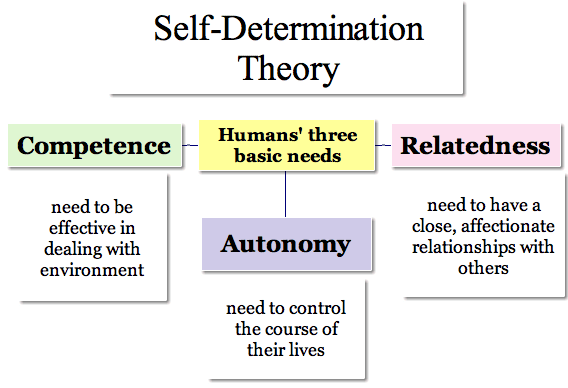
The concept of self-determination understands that people are naturally curious and seek to have choice in the activities that they pursue. For the person, their intrinsic motivation to perform is based on the inherent enjoyment of the task rather than through extrinsic motivators such as pay or other rewards.
For the individual in their work environment, there is a correlation between the variation in their degree of intrinsic motivation and their experience of autonomy, competency and relatedness and the opportunity in their environment to show self-determination.
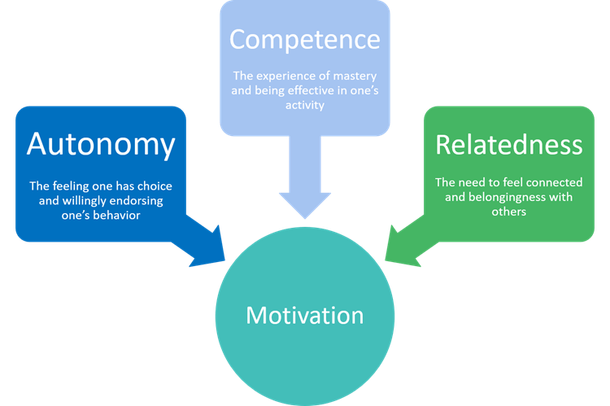
Let us take these three elements of psychological wellbeing separately
AUTONOMY
Autonomy is based on the understanding that we need to find our own sense of self as a unique individual responsible for how our life unfolds. Here we are talking about setting life goals, making decisions, choices, planning and execution.
Essentially, we are empowered when we feel a sense of choice and endorsement in a task – our actions are volitional (Deci & Ryan, 2008).
When we measure autonomy in the workplace we are assessing: our personal option to be there; how free are we to be who we really are there, our self-efficacy, performance levels. We need to take a step back and examine our mindsets i.e. our values in relation to work, belief about others and our self-belief systems.
MINDSETS
How we see, hear and relate to the world around us
What do you see below?

Now can you see both the old and the young woman?!
Alfred Adler, the founder of Individual Psychology, claimed that ‘we develop our desires and drives during our childhood then our whole adulthood becomes affected by these childhood experiences’.
“Every individual represents a unity of personality and the individual then fashions that unity. The individual is thus both the picture and the artist. Therefore, if one can change one’s concept of self, they can change the picture being painted.”
He spoke about a “Fictional Finalism” whereby people live by many fictional ideas that have no relation to reality and act as much from accepted ideals embedded in the unconscious mind as they do from observed reality. Whatever your mind accepts as truth, it acts as if it is true whether it is or not.
Adler claimed that the two key elements in the child’s outer environment which affect the child’s personality and attitudinal development: Family atmosphere and Family Values
Our parent(s)/guardian(s) establish a definite family atmosphere. Through their operational relationship with the external world, the child experiences the economic, racial, religious, and social influences in their environment and concludes, “This is what I have to expect and prepare for in my dealings with others” (Powers and Griffith, 1987, p. 23).
Family values are those values shared by parents and significant others in the child’s life. These values operate as imperatives in the family system or the child’s dependency system.
The child considers the values that are shared by the parents, and concludes, “These are the issues of central importance, on which I must be prepared to take a stand” (Powers and Griffith, 1987, p. 23)
Children take up a position of compliance or subversion or take up a contrary position. Their mindsets get configured around this family atmosphere and value system
So, these mindsets and values are essentially set or downloaded as we grew up in our family systems and the culture and values embedded in that system. It is vital that we reflect on our value system and mindsets when we consider life goals, autonomy and choice.
When we are reflecting on this family value system we grew up in, it can be helpful to picture family value system regarding work like a family crest. Family motto
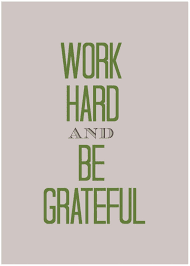
What would your family motto look like? what would be written on there? What images symbols?
What do you remember being verbalised around this work ethic in your family?
How did you respond to that expectation or imperative? Di you agree or disagree? Adapt or reject it? How do you relate to it now? What is your work ethic?
What does your work-life mean to you? What is the purpose of work Is it simply and exclusively a pragmatic reality for you, is it a mixture of the practical and more existential? How do you manage to bring these two together in your life? What practical purposes does your work meet for your day to day life? What purposes in terms of meaning does it serve? Are you satisfied with your work ethic? Is this your work ethic or someone else’s? Perhaps as you reflect on these questions there is something nudging you towards a deeper work satisfaction. One that can complement all areas of your life.
WHAT WOULD YOUR WORK MOTTO SAY?
Is this your work merely a job or has it more meaning for you personally in terms of the bigger picture of your life? How free are you to say your yes to this job?
This is what we mean when we talk about the role of autonomy and choice in self-empowerment Just for now we could ask ourselves – are we here to survive merely or are we here to thrive? In any event how willing are we to take responsibility and by this I mean to take seriously our ability to respond to our deepest need for autonomy in our work to find our own sense of self as a unique individual responsible for how our life unfolds even if it causes ourselves or others discomfort. I would suggest there are consequences in any case for our lives and the lives of our loved ones especially those nearest to us. Very often they are the ones to point out to us the dissatisfaction that is very apparent to them as they are often significantly impacted on by our work lives. They can have very interesting albeit challenging feedback to offer into our growing self-awareness.
Essentially, our working lives are an expression of who we are, what we stand for, our values and ethics in the world. This level of self-expression also impacts especially those most intimately connected related to us.
Competence: The experience of mastery over a task or particular domain
The concept of competence originates from the idea that individuals seek to control outcomes and this control allows them to experience mastery over a task or particular domain. In one of Deci’s studies, he examined the importance of competence and feedback (Deci, 1971). When individuals were given positive feedback that was unexpected, this increased their intrinsic motivation to complete the task.
THE MIRACLE QUESTION
So, let us look at some questions that would apply to any position in the workplace from C suite to the shop floor. These are reflections used in therapies like Solution Focused Brief therapy to help the person focus and to perceive their desired goal as something manageable and attainable.
So firstly, to ask yourself on a scale from 1 – 10 how satisfied are you in your work/workplace? What are the obstacles do you perceive in this situation in terms of feeling more satisfied, more in control, more autonomous?
Then, if a miracle was to happen what your workplace look like?
What would be the overall mood of the working environment? How would people relate to each other respond to each other’s needs? What would be the quality of the work atmosphere in terms of communication, conflict management, reward systems, vision development, planning, execution, goalsetting activities?
What would you be doing? What position of responsibility would you have? What role would you play our contribution you would make to this miracle scenario? Between 1 and 10 scaling what how satisfied would you be personally? How satisfied will others be around you?
Have you ever experienced this level of satisfaction and where and when? What helped achieve this goal? Who was there? Were there blocks on the way? How did you negotiate them?
How ready are you to take a step towards that progression?
What SMART GOALS can you put in place;
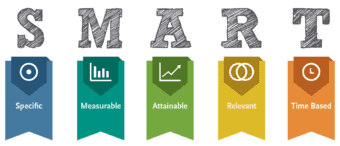
Looking at the small step that can bridge the next mall gap between you and your ultimate goal. For example, it could be to approach HR and discuss your needs at this time. To research a training resource in the area you feel challenged and to ask advice around that. It is not an unmanageable unrealistic undertaking but step by step realistic, measurable, achievable, realistic, time limited. The essential thing is that you are in control of your next steps to progress the desired outcome.
At this juncture it is important to recall Carol Dwecs model of the Growth or Fixed Mindset
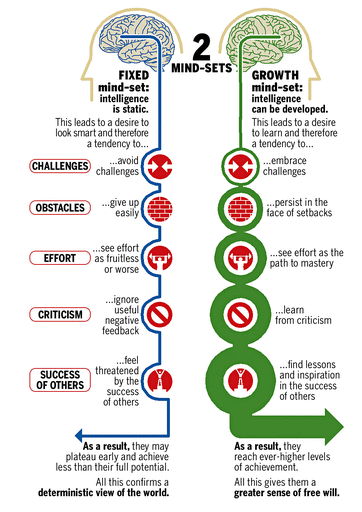
WORK AND RELATEDNESS OR BELONGING
Relatedness: Social connections and a high concern for others
Individuals are social animals and have a need to interact with other human beings. This sense of relatedness is demonstrated through social connections and a high concern for others through caring. Self-determination theory posits that relatedness is important for individuals and is linked to intrinsic motivation. In a study by Grolnick and Ryan, they found that children who found their teachers to be cold and uncaring were less intrinsically motivated because the teachers did not fulfil their needs of relatedness (Grolnick & Ryan, 1989).
In this section we will look at our need to Belong, be a part of a group, be mirrored and supported for who we are by the group and the importance of that for our mental, emotional and spiritual wellbeing.
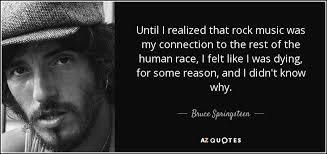
Bandura in his theory of Self-efficacy which refers to an individual’s belief (as distinct from self-esteem) in his or her capacity to execute behaviours necessary to produce specific performance attainments focused on the domain of functioning and circumstances surrounding the occurrence of a behaviour. (Bandura, 1977, 1986, 1997)
Mentorship, role modelling (‘vicarious experiences’), affirmation and re-enforcement (‘Verbal persuasion’) were key elements in building up this confidence in the ability to exert control over one’s own motivation, behaviour, and social environment.
Relationships in the workplace are like any other human systems and typically mirror our earliest experiences of belonging i.e. our family, school, friends. In this system, we can identify familiar experiences, patterns of behaving and relating and expectations. We can identify our attachment styles where we come close in confidence and trust or tend to move away and keep our distance or indeed oscillate between the two.
Social embeddedness refers to the reality that humans are innately sociable: surviving through learning to cooperate, and thriving through learning to collaborate through group life. This concept requires us to look at the cultural and social contexts (i.e. social ecosystems) in which we find ourselves. Adler stated, “Individual Psychology regards and examines the individual as socially embedded; we refuse to recognize and examine an isolated human being” (Adler, 1926). Thus, for Adler’s IP, mental health professionals must be cognizant of the social contexts in which people are embedded. Do these social contexts promote or hinder psychological well-being?
All healthy organisms require a healthy, nurturing ecosystem if they are to thrive.
Optimal psychosocial development and emotional wellness derive from the feeling that one counts for something and that they would be missed if not there. Essentially the feeling that one is worthwhile, valued, needed and is making a valued contribution.
Community Feeling/Social Interest (gemeinschaftsgefuhl) was Adler’s criteria for mental health and social wellbeing. This involves an interest in the interests of others and sense of being worthwhile, respected, and connected in a useful, meaningful way to one’s social community and the “cosmos” (Ansbacher, 1968).
The well-adjusted individual, therefore, feels at home with others, is empathic and has a sense of responsibility to cooperate and contribute to the welfare of others and the world. It is a spiritual, global sense of connection and contribution to both humankind and the environment.

REFLECTION
Let’s take a moment to reflect on our own personal experience of the work ecosystem we have invested into and our relatedness and sense of belonging.:
What is your attachment style in the working environment? Do you come close quickly or keep your distance? How ready are you to trust others?
How does your work system compare or contrast to other systems you have in your life: family, friendships? Do you recognise any familiar patterns of inter-relationship, familiar feelings, familiar reactions, attitude behaviours? How broad is the spectrum of your emotions in this environment from joy to fear, disappointment shame? What buttons get pressed for you? And how is that for you?
Do you feel you have a place and empowered in that position. Where is there a window of opportunity to upgrade your contribution to the system to make it more conscious and integral to your own optimum performance levels. Where is there help for you around this progression? No man or woman is an island. Who is or potentially can be your support network, mentor for upskilling opportunities, training, self-care, promotion, and personal growth opportunities? EAP programmes and other HR support is very important in this process. It comes back to are we here to survive or thrive.
Typically in the past there was a taboo around approaching mental health experts but more and more people is recognising that this is more about reaching one’s own personal and unique optimum levels of performance and productivity in every area of life not just in work.
FEEDBACK (Johari window)
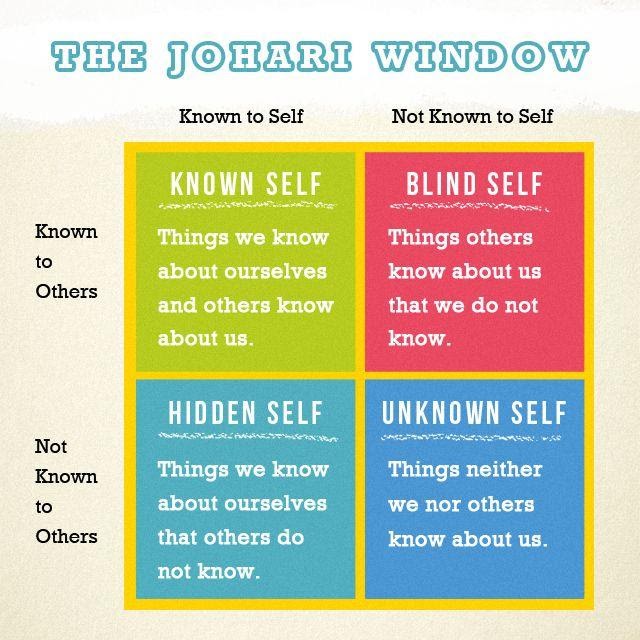
A crucial part of belonging is to have a sense of who I am and how I fit in in the group. This is an ongoing lifetime process of self-awareness. And if we take it that life and ourselves are a mystery, we can enter that mystery or stay away from it by putting ourselves and others into boxes thereby stifling the potential for expansion and transformation.
Entering into the mystery is a wonderful journey but also a challenging one. To begin with situations like the workplace it is important to know how I impact on others on the team.
In order to reach optimum team participation, I need to learn how to ask for feedback and how to listen to that feedback. Not necessarily taking all as gospel but recognising recurrent patterns from a variety of feedback sources that may be more than just coincidence! To do this it takes trust and if we have not felt seen or felt heard in our early mirroring systems such as the family of origin and school feedback system, this does not come naturally. We will not feel immediately safe to open up to strangers to get us, get who we are and to be respected at that level essentially.
This all takes practice and trust-building. Having the appropriate mentors and role models is crucial for progression in the area of feedback. The two-way information feed that can boost confidence and self-efficacy.
ASKING FOR HELP (Story of the boat)
The final part of this process of reaching out to others is the ability to ask for help.
This is a story about a man with hope and faith during a time of emergency. It is applicable to both personal and work-life.
There once was a man who lived in a two-story house. The house was near a river and unfortunately, the river began to flood.
As the river rose, warnings were given via radio, TV and shortwave. Large jeeps drove through the area to evacuate people. As a jeep drove by the man’s house, he was told:
“You are in danger. Your life is at stake. You must evacuate. Get in the Jeep. Let us help you evacuate.”
“No,” the man replied from his doorstep. “I have faith. I will be ok. The flood won’t get me. God will take care of me.”
The water continued to rise.
Soon the man was on the second floor. A boat was going through the area and arrived at the man’s house. Rescuers made every effort to convince the man to take action so that his life would be saved.
“You are in danger. Your life is at stake. You will drown in the flood.”
“No worries,” says the man. “I have faith. Everything is ok. Even though the flood is rising, I will be fine. God will take care of me.”
The flood continued to rise.
The man went to the roof to avoid the rising water. A helicopter pilot sees him on top of the roof and hovers above the man. Using a megaphone, the pilot tries to convince the man to grab the rope ladder which was dangling above his head.
“You are in danger. The flood is still rising. You will drown if you do not grab the rope ladder. Let us help you.”
“No worries.” says the man. “I will be fine. Yes, the flood is higher but I have faith. God will take care of me.”
The flood rises. The man drowns.
At the pearly gates, the man says to God: “I had faith. You let me die.”
To which God replies: “I sent you a jeep, a boat and a helicopter. What more could I have done for you?”
How do you feel about asking for help? On a scale between 1 and 5 how would you score yourself?
Typically, people score high on this self-assessment scale. However, this can be asking for help where it feels we know what the result will be or want the outcome to be a certain way. For example, when I want a project delivered in a certain way, I ask the help of those who will fit that expectation rather than ask someone who bring a new perspective into the situation and open up a new window of opportunity for everyone involved. When was the last time I asked for help at work?
Are there similar patterns around reaching out in other areas of my life for example family friends? Leadership training programme research outcomes for global companies revealed the key variable in successful and sustainable productivity and growth was not what would have been anticipated in the past i.e. a self-contained top-down leadership but a strategic style of distributive leadership which highlighted the ability to ask for help (Evans, 5 Dimensional Leadership, 2019).
Evans’ research asserts that the ability to ask for help appropriately reflects huge maturity in the person and the leader and demonstrates that they are able to go beyond ego and develop real humility – humus literally grounded in reality, the truth of their limitations. Such characterizes great human leaders
SELF ACTUALISATION AND THE WILL PROJECT
As we already have seen, In the area of motivation, researchers have described the three fundamental psychological needs that drive human behaviour – autonomy, competence and relatedness. Maslow’s hierarchy of needs adds another dimension that of self-actualisation which includes the psychological and the spiritual.
Self-Actualisation
Self-actualization, in psychology, a concept regarding the process by which an individual reaches his or her full potential. In addition, his theory asserts that the drive to self-actualize will only emerge as a motivator once a variety of more basic needs are met. Also, in this module, we will look at the Will in more depth and our relationship to our will.
My guess is that is you are watching this course about self-empowerment, your work-life is satisfactory to a significant level and you want what’s optimum in that situation for now even if it is not a permanent platform for you to shine but maybe a stepping stone for some other.
When we speak of optimum performance at the level of self-actualisation, we are talking about moving beyond the goal of survival to one of thriving, exploring new mindsets, shining our unique light to the world, sharing our gifts and talents for the good of all, essentially of engaging our will and taking responsibility for that.
In psychosynthesis psychology (Assagioli 1974) this is called the Will Project. Another way of thinking about the Will and the Will Project is in terms of our response to the inner nudges for growth, take cognisance of the reality/truth of who we are and have the potential to be. Essentially, what we are also speaking to is our dignity as working beings.
The Will is often understood in terms of strong or weak or powerful. We refer to the strong will or weak will, willpower, essentially as a force within us that can either push through and implement or what we want. The alternative can be seen in terms of failure i.e. where we shy away, recede, and fail. This can be a dangerous dualism when we think of my will pit against yours, a war of wills we are talking about a dual as they had in the westerns, the battle of the lust for dominance which can only bring a scarcity of outlook, vision.
However, the Will is a much more complex and nuanced and diverse resource at our disposal – we also have the facility of skilful will and goodwill, willing surrender, which is key to collaborative productivity and optimal outcomes.
In transpersonal psychology locates the hub of our will at the core of our Being, it is dynamic energy – a life force recognised by many different disciplines which study the nature of the human being.
Freud spoke of this force as libido, spiritual disciplines in the East speak of Chi energy. Chi Gong and Tai Chi practice fine-tune our awareness of this energy. Christians speak of the presence of the Holy Spirit.
Over time, this force takes on form and differentiates into consciousness and produces action. Here in all these traditions, when we talk about engaging the will, it is essentially about bringing us to experience life in its fulness, to blossom and grow and shine out from every corner of who we are and our nuanced version of human potential.
Roberto Assagioli the founder of psychosynthesis psychology regarded the will “as the central element and direct expression of the I, or self”. The inner force which is available to guide each individual towards self-realization and to actualize the potential of all humanity
At its highest level, this connection is experienced as joining the personal will with Universal Will for good of all is aligned
4DL
Business consultant, psychotherapist and researcher Roger Evans identify 5 dimensions of leadership. When describing the will he writes, ‘Individual freedom (free will) to both make clear decisions and then to drive delivery in the face of resistance to be blown in the wind, to bend but to stand firm.’
Our will can get trapped and we can feel stuck
So, let us take a look at that question again in the more specific concrete fashion. On a scale between one and five, how free are you to say yes to your job? And in turn to ask yourself on a scale between one and five how free to say your no? Be that the choice to do a certain job for a given period of time to pay the bills
The Will Project
We have looked at techniques around increasing the quality of our work life in terms of our core psychosocial need for autonomy, competency, relatedness. We looked at our mindsets and putting some smart goals in terms of growth and change. This section will deepen that reflection to touch base with your core felt experience of self and what transpersonal psychologists regard as the hub of all wellbeing.
We are talking here about our wellbeing at all levels, mental, physical, emotional spiritual – firing on all cylinders!
So now let us take a moment – What is my will project in terms of work? where am I going with this project in my life? Why did I begin this project, why now?
What is my vision for my job?
Sometimes we blame the nature of our work or the boss or higher company leadership for lack of vision to progress the project. We can find lapsing into lethargy or ambivalence to outcomes and we just go with that flow imagining that it is outside of our control. But if all the employees have a similar vision or lack of vision where is the project going. A bit like if a bus full of people were unsure of their destination and it was left to the driver to choose the destination. This would be exhausting frustrating and a great waste of resources. Ultimately this scenario would be a hotbed of frustration, anger and depressive cycles. Of course, there are different styles of leadership and top-down typically engenders this level of passivity but at the end of the day in our own roles, we have the power to make an impact for the good or otherwise and be an agitator in the system like the sand in the oyster shell.
As I said earlier our working life is interconnected with all other aspects of our life. So what is our vision/ purpose statement?
I invite you to pause for a moment and to complete the sentence:
My vision for my work looks like… For example, my vision/ purpose could be this work, for now, put bread on the table, gives me experience, grows my CV, creates opportunities for the future. Or the vision could be deeper than that – my vision for my work is this it skilled me up to progress my career in this field of work so that I can serve others in the future. For the purpose of a building a formation ground for their children or a secure home for those in their care to grow to develop, to thrive.
Or my work project is the result of many years of upskilling and transformation and I am now confidently bringing this expertise to the leadership table for growth and transformation of the bigger project of the company or society at large.
Our will can get trapped and we can feel stuck
REFLECTION
Some reflective exercises to help you concretise this discussion of engaging with the will effectively in the workplace:
What is your purpose in your work? … And what is the purpose of that?… And what is the purpose of that?…
Which of these images best describe your engagement and performance levels at work?
Which of these animal types would describe how you engage your will or apply yourself at your work?
What are the qualities of that animal, disposition, attitude, commitment? What is helpful what could be tweaked?
What is the next small step in you will project?
Self- Empowerment and self-empathy
However, to leave the picture there with the will is to have a lopsided as far as transpersonal psychology is concerned. The is another element or partner of the will if you like and that is Love/ empathy.
Again, this brings us to reflect on our formation ground. In terms of learning to relate to our will as children, it can oscillate between a strong willfulness or stubbornness or on the other hand a reticence and dissociation with the will. In terms of developing performance skills, very often we learn to respond to the expectations from outside which are about the doing of the task. In meeting that expectation, our need for approval and acceptance may be met but perhaps only to a point. Upgrading this download to use that analogy, involves learning how to love and being empathic with ourselves as we learn to do.
The infant learning to walk can learn to respond and engage its motor faculties and walk eventually but it needs to get held and supported during the process. By this I mean download an inner empathic flexible system when it falls in order to get up again with confidence and resilience. Otherwise, its inner foundations of resilience and regulation will be set with rigidity and forcefulness which will characterize its relationship to others and the world around them. This formation will lay the foundations for performance anxiety. Empathic and mentoring relationships at work or elsewhere or a vital scaffolding for greatness, flourishing, abundance, resilience, efficacy.
Self-empathy has nothing to do with feeling sorry for oneself. It is all about the ability to descend the high horse of self-judgment and lean into the actual real experience of the moment which can be very painful at times of growth spurt. Empathy is to walk in the shoes of the other and in terms of self-empathy it is about oneself.
The phenomenon of the will is not easily a clear concept but we do know it more at the level of the intuition and felt sense what that energy feels like or that presence in us that propels us on in our lives to achieve, to reach out to others, to move forward. The image of the mother lifting the bus off the child.
Developing a mindfulness practise or discipline in physical training teaches us how to relate to the will as that great potential in us. We can more consciously embrace that power for life and learn to work with it skillfully harnessing that energy for good for the good of others as part of the universal good universal goodwill.
Be it the cup of beverage you make on your break time at work with love and kindness this can bring a huge freeing up of your will to be creative and resourceful and connect in with others to build networking.
This brings us on to the final part of this series and most important for sustainable growth and empowerment in the workplace.
WORK AND WELLBEING
In this session, I will present some self-care and wellbeing practices for building resilience, stress management, and self-efficacy and relationality with others or health care professional.
INVENTORY
It is important to do a work wellbeing inventory on a regular basis. To ask yourself every morning midday evening before retiring at night these questions. To share this reflection with another person you are close to in a non-judgmental supportive relationship.
Am I tired when I wake up in the morning? After a good night’s sleep is my sleep broken on a regular basis? Am I irritable agitated during the day for no apparent reason? What would my loved ones say about this? Do I fly off the handle for apparently no reason? And my scrutinizing my own are others behaviour, what they’re saying? Am I experiencing tightness in my body on an extended level, tightness in my chest, solar plexus, palpitations, headache or fuzziness in the head, blurry vision? Have these symptoms been experienced by you over a prolonged period?
Typically, we get stressed and anxious when we’re not listening to our own felt experiences in our relationships with family or work with our friends. It may not be convenient to address this in ourselves, maybe uncomfortable, maybe we can’t make sense ourselves what’s going on. Maybe we have been rationalizing situations that are just not appropriate but to challenge myself or others in this context may bring suffering of some level.
What is your way of coping?
TV, Social Media, Alcohol, Drugs, withdrawal from relationships, shutting down.
These are defence mechanisms or avoidant habit cycles keeping us away from feeling emotions around the issue. So again, invite you to pause for a moment and ask yourself do you recognize any of these symptoms and behaviours?
This can show itself when oscillating behaviour sometimes giving in and adapting to the environment and dynamics interpersonal dynamics. Sometimes this can lead us to an inner frustration that ends up in exasperation and giving up and depressing what needs to get expressed. Thereby pushing down the anger the frustration or the grief at knowing when the time to move on has come. There is an alternative positive habit cycle – saying what needs to be said being real, taking responsibility, forgiving oneself and others. And to try to skip over bypass that process well only bring pain and suffering.
JOURNALLING
Keeping a journal can be very helpful to slow you down and enable you to listen to what’s going on inside. This is a way of keeping an inventory of your day: what happened, who’s been in your day, things that were said, things are hard, how you really felt today. Things that went well today and that can be the inspiration and beacon of light for tomorrow when we begin to doubt. We can be creative and fantasise on what could be different tomorrow recognizing that each day brings new opportunities and a fresh window on your life experiences. At the same time, we are releasing energy through your pen our digital device.
This is effective particularly before you go to bed this can be ritual of letting go and surrendering your hold on the day, the reactive and over-analytical cycle. It can help to bring the right brain of creative expression and emotional life to come into a balanced relationship with the left-wing that makes sense of, filters information, plans.
MINDFULNESS EMPATHIC EXERCISE (5 mins soothing break in the workplace)
So calling to mind again the empathic connection essentially for the baby learning to walk and before them as it begins to happen comforting or soothing your secure feelings in its body it’s building up and network within him/her a nervous system that’s responding to its caregiver’s attention, vocal reassurance, regulation, touch affection. This is called the social engagement system or vagus nerve system that receives information from circuits in the brain in relation to his/her safety. This nervous system and solar plexus area are built in order to give this person an internal scaffolding for their life abundance, resilience making their way in the world growing up flourishing connecting with others. It extends from the back of the head into the forehead through the face and down into the chest and abdomen.
Begin by making yourself comfortable, feet connecting to the ground beneath you, your back supported by the chair, the contact points between your sitting bones and the chair beneath you.
Noticing the rise and fall of your breath in your body and the contact sensation on contact with our breath and your nose, throat, chest.
Placing one hand on the back of your neck and one on your forehead. Again, sensing into the contact and touch of your palm.
Bring one hand to your chest and one to your solar plexus.
This soothing gesture sends messages back to the cognitive mind that all is well and you are in control



